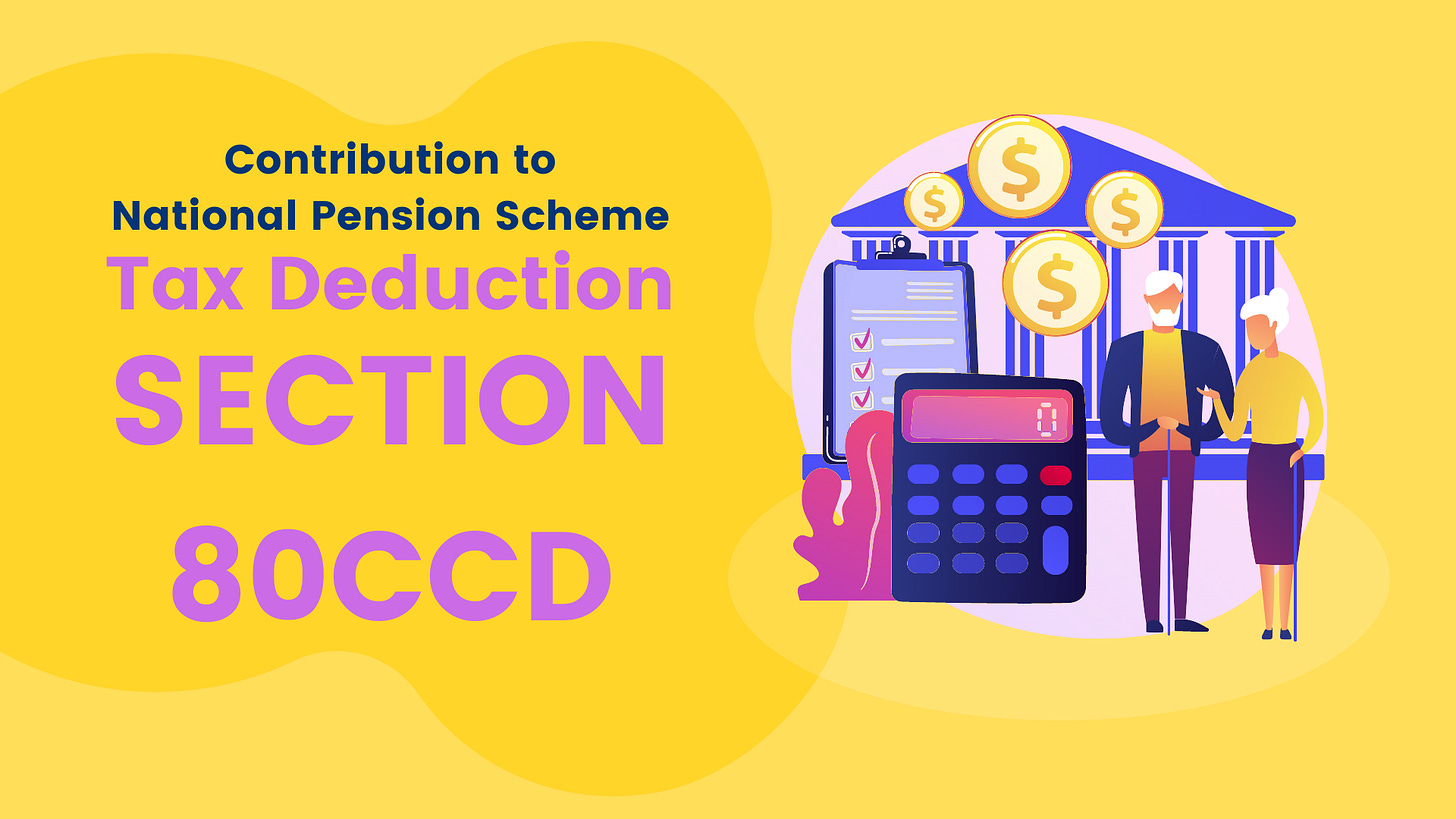Everything About 80CCD (NPS)
Today, health care costs have the potential to significantly diminish an individual’s savings. Knowing that these costs are only going to increase, all individuals
To encourage such investments, the Government of India has introduced a deduction under section 80CCD to promote retirement savings.
What is 80 CCD?
NPS is introduced by Central Government with a motive to help individuals create a retirement corpus.
This deduction is available for government employees, private sector employees, and self-employed individuals.
According to Income Tax Act 1961, every individual can claim a deduction for the contribution made to National Pension Scheme (NPS) or Atal Pension Scheme (APS). This section also covers contributions made by an employer towards NPS.
The maximum amount of deduction available under this section is INR 2 lakhs (including the deduction of Rs. 50,000 u/s 80CCD(1B).
Deductions under Section 80 CCD (1) & (2)
Section 80CCD (1): This section deals with the deduction for the contribution made by an individual to NPS. This section applies to all Indian citizens between the age of 18 to 65. This section also applies to NRIs.
The maximum permissible deduction is 10% of salary (Basic + DA) or 10% of the gross income of the individual.
For a self-employed individual, the limit is 20% of gross total income with the maximum limit being capped at INR 1.5 lakhs.
Section 80 CCD (1B): This sub-section provides an additional deduction of INR 50,000 for individuals over and above the limit of INR 1.5 lakh which means an individual can claim a total deduction of INR 2 lakhs.
Section 80CCD (2): This section covers the employer’s contribution to NPS on behalf of the employee. The contribution amount can be higher or equal to the contribution of the employee. This section applies to only salaried individuals.
The deduction amount for employers’ contribution cannot exceed 14% of salary in the case of government employees or 10% of salary (Basic + DA) in the case of any other employee.
There is no ceiling on the amount of deduction for an employer’s contribution.
Points to remember:
Monthly payments received from NPS are taxable.
One must have proof of the amount contributed to NPS.
Any amount received from NPS, which is reinvested in the annuity plan is entirely exempted from tax.
Who is eligible?
Any individual covered under the following points can claim the deduction.
Any self-employed or salaried individual making a contribution to NPS.
Companies who pay for their employees towards NPS.
For NPS tier 1 - A monthly contribution of INR 500 or INR 6000 annually
For NPS tier 2 - A monthly contribution of INR 250 or INR 2000 annually
Tax liability on withdrawals
For government employees, it is mandatory to contribute to NPS until the age of 65 years, voluntary for others. However, the amount deposited can be withdrawn subject to certain restrictions, which are as below:
Partial withdrawal (Before the age of 60): Up to 25% of subscribers’ contribution is exempted. However, there are some conditions for partial withdrawal.
Subscribers should be enrolled with NPS for at least 3 years.
The amount can be withdrawn only 3 times during the tenure and the amount withdrawn cannot exceed 25% of the contribution made by a subscriber.
Annuity purchase: Fully exempt, only annuity income from the subsequent year is taxed.
Lump-sum withdrawal: Up to 40% of the total corpus is exempted.



